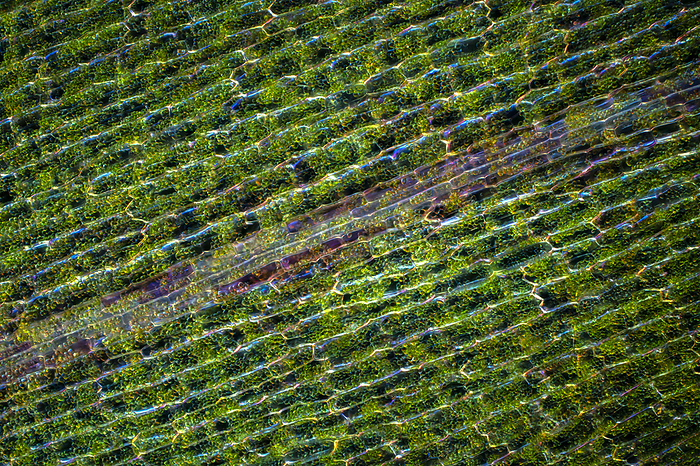
RM
Canadian waterweed (Elodea canadenis) leaf, light micrograph
Darkfield light micrograph of a Canadian waterweed (Elodea canadensis) leaf. This common aquatic plant is found in freshwater lakes, ponds, and rivers. The leaf is an important part of the plant's photosynthetic machinery, as it contains specialised cells called chloroplasts, which are responsible for capturing light energy and converting it into chemical energy through photosynthesis. The chloroplasts contain the green pigment chlorophyll, which is essential for the absorption of light. Under the microscope, the leaf tip of Elodea canadensis appears as a thin, flat structure with a single layer of cells arranged in parallel rows. The cells are elongated and have a rectangular shape, with a large central vacuole and a nucleus located towards one end of the cell. The chloroplasts are located near the cell walls and appear as small green ovals or discs. The leaf tip of Elodea canadensis is an important model system for studying plant physiology and photosynthesis, as it is easy to culture in the laboratory and can be used to investigate a range of questions related to plant growth, development, and response to environmental stresses., by KARL GAFF / SCIENCE PHOTO LIBRARY

More
Top Categories
